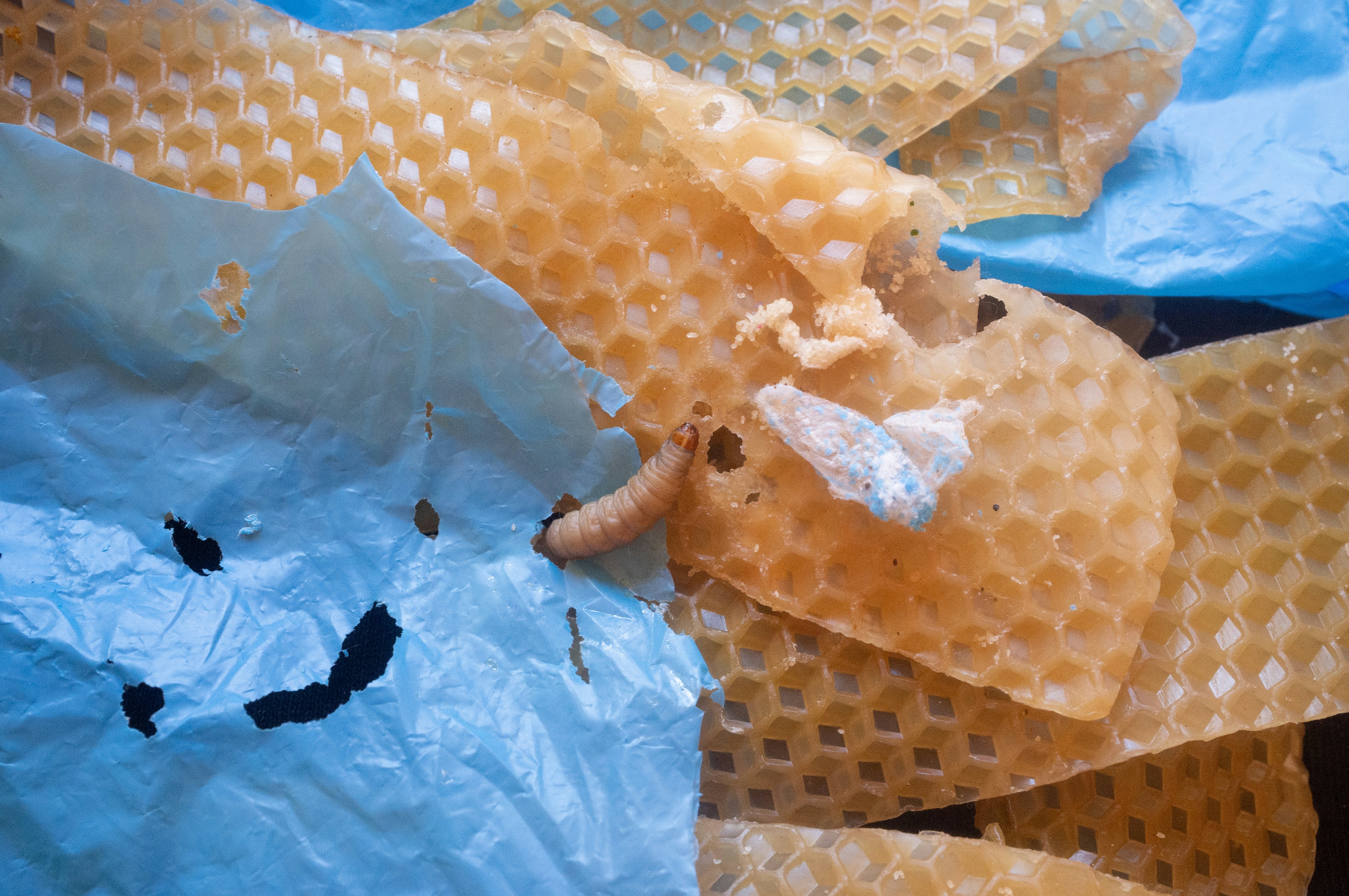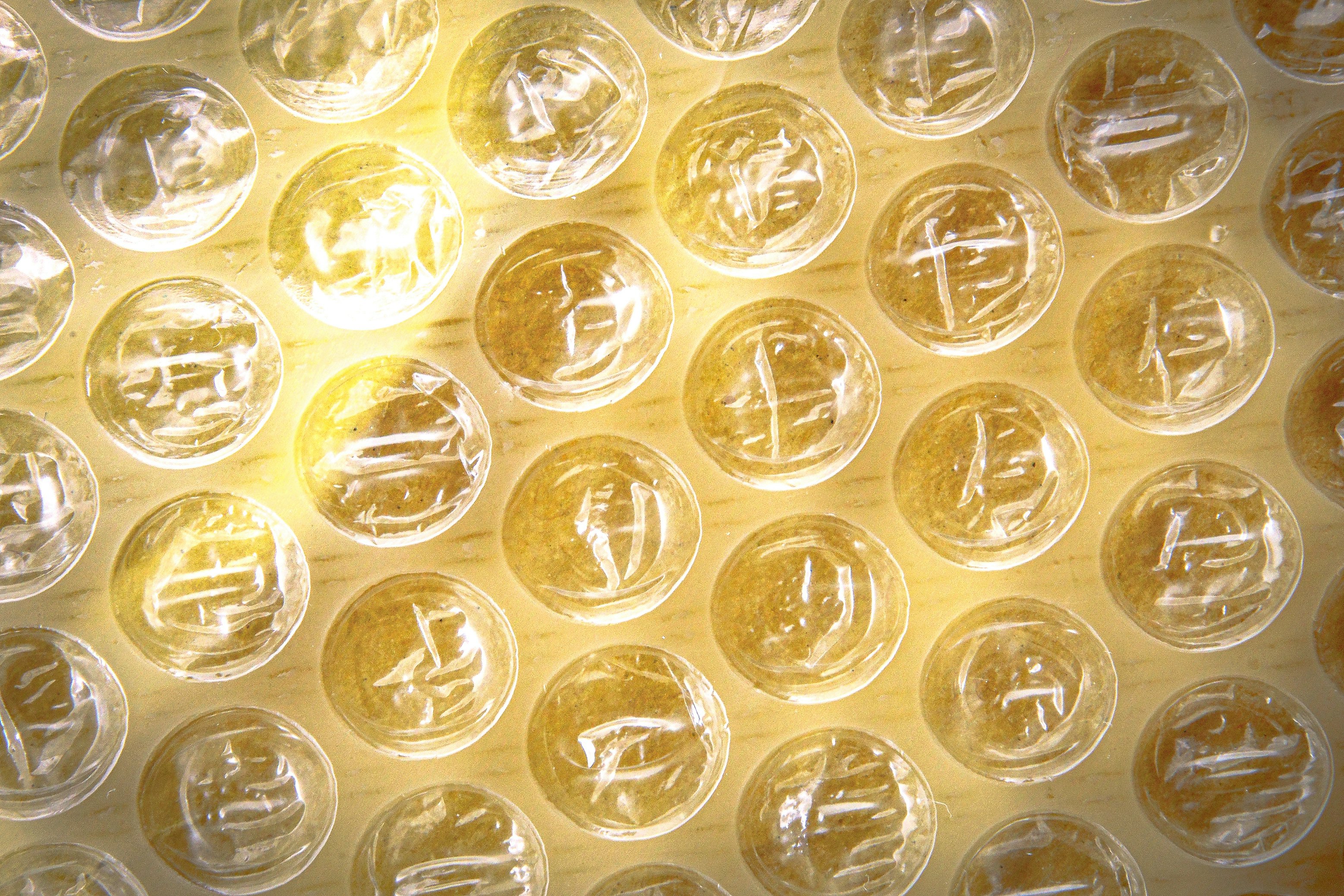
You may know the story of The Very Hungry Caterpillar, a chunky insect that devours everything in its sight, including five whole oranges and even a slice of chocolate cake. In reality, many creepy crawlers have more of a hankering for meals like grass, leaves, and wood (or, for some species, our garbage).
Unlike our rotting leftovers, they don’t necessarily crave the plastic sitting in our recycling bins, sadly. But it turns out that one tiny creature’s mouth could still help tackle our massive plastic waste problem.
The saliva from the beeswax-eating wax worm, or Galleria mellonella, could be harnessed to break down the world's most widely used plastic, according to a new study published in the journal Nature Communications.
“All the little steps in our discovery were pleasant and happy surprises,” says study author Federica Bertocchini, a molecular biologist at the Spanish National Research Council.
Here’s the background — Plastic pollution is a huge problem worldwide: We produce around 350 to 400 million tons of non-degradable plastic annually, and 5 to 13 million tons end up in the ocean.
A polymer called polyethylene, or PE, makes up around 30 percent of the plastic we use every day. PE is commonly put into food packaging, trash, grocery bags, and wire insulation.
Currently, there isn’t a lot of research being done to find novel ways to break down PE. Instead, the bulk of work on new organism-powered recycling techniques focuses on the PET plastics that are commonly used in plastic bottles, says Lucas Ellis, a researcher at Oregon State University who studies how chemicals can jump-start recycling processes.

In recent years, some labs have found ways to break down PE with the help of certain organisms like bacteria and fungi, a process called biodegradation. But it can take months, and usually requires harsh pre-treatment like heat or radiation that demands loads of energy.
In one line of biodegradation research, scientists have tried to use microorganisms from insect larvae guts, including some from wax worms, to destroy plastic. But the results were inconclusive.
Now, a new approach could wield a widely available resource — worm spit — to break down polyethylene before it can pollute our waterways and impact the health of humans and our broader ecosystems. “Maybe the difference has been the looking into the worm, the invertebrate, instead of the bacteria,” Bertocchini says.
What’s new — Bertocchini and her team studied wax worm larvae saliva and found that it can degrade PE by breaking it down into smaller molecules. The process only takes a few hours. To the best of the researchers’ knowledge, this is the quickest biodegradation technique yet for PE.
To find out how exactly this works, they took a closer look at the saliva with the help of Gas Chromatography-Mass Spectrometry, a combination of two technologies that work to separate a chemical mixture and identify its ingredients.
The researchers were then able to pinpoint two enzymes responsible for this process. (They named them Demetra and Ceres after the Greek and Roman goddesses of agriculture.) Demetra and Ceres bring oxygen into the mix, which breaks down the molecules in the polymer in a relatively short period of time.

Why it matters — As far as the scientists can tell, these are the first enzymes sourced from an animal that have been shown to deteriorate plastic. This discovery could transform the way we recycle PE, and it could potentially work on other types of widely-used plastics.
This worm saliva concept is an example of low-temperature “biological” recycling, a new field that could offer certain advantages over the chemical recycling methods now rolling out in the U.S — these typically involve heating plastic in a low-oxygen environment.
While biological techniques take longer than chemical ones, they could prove much cheaper and may work well for individual cities looking to process their own plastic waste rather than outsourcing it, according to Ellis. Plus, chemical recycling facilities can create hazardous waste and emit harmful air pollutants.
Ultimately, cities may add both biological and chemical technologies to their recycling toolbox and decide which works best for specific materials.
“I think there’s going to be a lot of exciting new developments in the space of lower-temperature processing of plastics … it may be a tandem approach of mixing chemistry and biology,” he explains.

What’s next — We’re not quite at the point where we can deploy armies of wax worms to demolish our crap. In reality, Bertocchini says her team needs to reproduce the enzymes on a bigger scale, and it’s yet to be seen whether the process works on other kinds of plastics. She also wants to better understand how exactly the enzymes get the job done.
And, as Ellis points out, it isn’t clear what exactly we can do with the byproducts. Recycling technologies need to spit out valuable substances in order to be profitable, like energy or chemicals, but this proof-of-concept study can’t answer that question. In fact, this is a common obstacle when researchers come up with unique new recycling concepts, he says.
Moving forward, Bertocchini hopes that her new study can inspire other labs to go after similar research. “We also hope that the study might increase the study of insects as the wonderful resourceful animals they are, both as a biotechnological tool, but, even more, at the basic research level,” she says.
She envisions the saliva enzymes deployed in both large- and small-scale recycling schemes, but far more work (and funding) is required. “This is all at the very beginning,” Bertocchini says.







